French Flavor

Why is French cuisine, including desserts, considered among the finest in the world ?
French cuisine, including desserts, is renowned worldwide for its exquisite flavors, meticulous preparation, and artistic presentation. This reputation is due to factors such as historical significance, quality ingredients, artisanal methods, chef training, innovation, and attention to detail. French cuisine has a long history dating back to medieval times when it was influenced by various cultural invasions and trades. Over centuries, French chefs refined their techniques, creating a rich culinary tradition that emphasizes depth of flavor and precision in cooking methods. French cuisine places a high value on using fresh, high-quality ingredients, often sourced locally. The variety of ingredients available in different regions of France allows for a wide array of dishes and flavors. French baking traditions, such as those used in making croissants and baguettes, involve complex processes that yield exceptional results. Many French desserts, like macarons and éclairs, are handcrafted with care, ensuring each piece is of the highest quality. France is home to some of the best culinary schools in the world, where future chefs receive rigorous training. Young chefs often learn from experienced masters through apprenticeships, preserving techniques and recipes. French chefs are known for their innovative approaches to traditional dishes, pushing the boundaries of gastronomy. The integration of international flavors into classic French dishes keeps the cuisine dynamic and exciting. French cuisine emphasizes not just taste but also the visual appeal of the dish, making every meal an experience. The emphasis on all senses—smell, sight, taste, touch, and even sound—creates a comprehensive dining experience.

What are some unique ingredients commonly used in French desserts ?
French desserts are renowned for their exquisite taste and delicate textures, which are largely due to the unique ingredients used in their preparation. These include vanilla beans, almond meal, cream, butter, lemon zest, and kirsch. Each ingredient plays a crucial role in enhancing the flavor, aroma, and texture of French desserts. Understanding the importance and usage of these ingredients can help you appreciate the artistry behind French pastry making and even try your hand at creating your own delectable treats.

What kind of chocolate is typically used in French chocolate desserts ?
The article discusses the importance of chocolate selection in French chocolate desserts, highlighting the use of dark, milk, white, and unsweetened chocolate. It emphasizes the rich culinary heritage of France that demands quality ingredients, especially in chocolate desserts. The article also suggests considering the desired outcome of the dish, taste testing, and experimentation to find the perfect chocolate for a particular dessert.

Where can I find the best French patisserie in Paris ?
Paris is renowned for its delectable pastries and desserts, and finding the best French patisserie can be a delightful adventure. Some of the top recommendations include Angelina, Ladurée, Pierre Hermé, Du Pain et des Idées, Pâtisserie Ciel, Gerard Mulot, Arnaud Larher, Carl Marletti, Patrick Roger, Hugo & Victor, L'Éclair de Génie, Le Moulin de la Vierge, Gosselin, and Au P'tit Suisse. Each offers their own unique twist on the classic French pastry, from traditional macarons to modern flavor combinations.

What are some traditional French desserts served during the Christmas holiday season ?
The Christmas holiday season in France is a time for indulgence, and what better way to indulge than with delicious desserts? Here are some traditional French desserts that are often served during the festive season: 1. Bûche de Noël (Yule Log) - A classic French Christmas dessert, this rolled sponge cake is filled with creamy chocolate buttercream and decorated to resemble a log. 2. Tarte de Pommes Caramélisées (Caramelized Apple Tart) - Thinly sliced apples are caramelized and arranged in a pastry shell, creating a smooth and rich custard filling. 3. Palets Breton (Breton Butter Biscuits) - Light and crispy butter biscuits from the Brittany region of France, often served alongside coffee or tea. 4. Macarons - Although not exclusively a Christmas dessert, macarons are a staple in French patisseries all year round. Festive flavors like gingerbread, peppermint, and chestnut make them perfect for the holiday season. 5. Buche de Châtaignes (Chestnut Log) - Similar to the Bûche de Noël, this chestnut-flavored sponge cake is rolled up with chestnut cream and decorated with marzipan to resemble a bark. 6. Oeillet Parfait (Parfait Pudding) - A light and airy pudding made with whipped cream and flavored with vanilla or other extracts, often served in individual glasses and topped with fresh fruit or berries. These traditional French desserts add a touch of elegance and sophistication to any Christmas celebration, satisfying every sweet tooth!
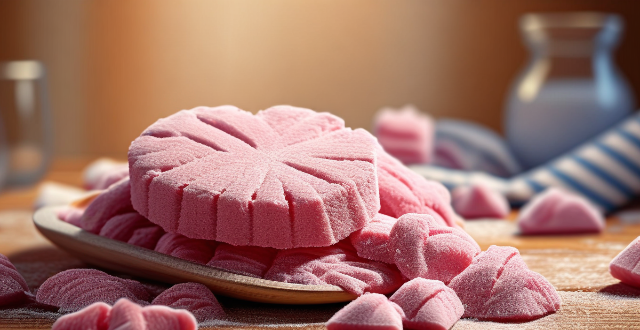
What makes macarons a quintessential French sweet treat ?
Macarons are a quintessential French sweet treat due to their origins, precise recipe requirements, variety, elegance, and cultural significance. They were perfected by the French in the mid-19th century and have become a staple in French patisseries. Despite the simplicity of the ingredients, making macarons requires precision and skill, which is emblematic of French culinary traditions. Macarons come in a wide range of colors and flavors, allowing for creativity and customization. Their small size and elegant appearance make them perfect for an afternoon tea or a light dessert. In France, baking is considered an art form, and the craft of making macarons is no exception. They are often given as gifts during special occasions, reflecting the French tradition of giving thoughtful, beautiful presents. Overall, macarons are not just a sweet treat but a representation of the beauty and refinement associated with French cuisine.

Are there any healthy French dessert options ?
The article discusses the various healthy options for French desserts. It mentions fruit-based desserts like Tarte Tatin and Clafoutis, which use fresh fruits as the main ingredient, providing natural sweetness and fiber. It also suggests using whole wheat flour or almond flour to make these desserts healthier. The article further introduces nut-based desserts such as flourless chocolate cake and walnut and almond cake, which are low in carbohydrates and high in healthy fats and protein. Finally, it concludes that there are many healthy French dessert options available that allow you to indulge in something sweet without compromising your health goals.
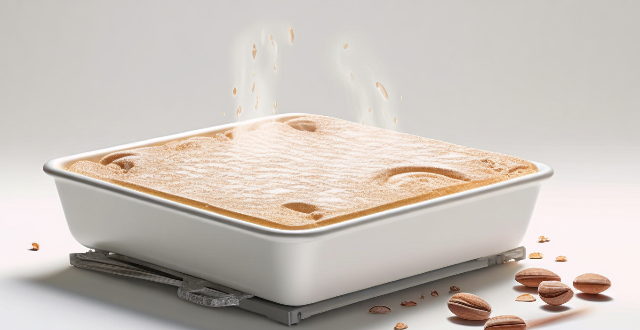
How do I make a classic French crème brûlée ?
Crème brûlée is a classic French dessert known for its rich, creamy custard and crackling caramelized sugar topping. Here are the steps to make it: Preheat the oven to 300°F (150°C), heat cream mixture with sugar and vanilla bean, whisk egg yolks with sugar, temper eggs with warm cream mixture, pour into ramekins, bake in a water bath until set but slightly jiggly, chill for at least 2 hours or overnight, caramelize sugar topping with a kitchen torch or broiler, and drizzle with caramel sauce (optional). Use high-quality ingredients for the best flavor, be patient when caramelizing sugar, and serve immediately after caramelizing for the best texture and taste.

Can you suggest easy French dessert recipes for beginners ?
Easy French Dessert Recipes for Beginners French desserts are known for their elegance and flavor, but they can also be easy to make. Here are some simple French dessert recipes that even beginners can try: Tarte Tatin: - Ingredients: apples, sugar, butter, puff pastry - Steps: preheat oven, peel and core apples, melt butter and sprinkle sugar in skillet, cook apples until tender, caramelize syrup, roll out puff pastry, place over apples, bake until golden brown, cool and invert onto serving plate. Chocolate Mousse: - Ingredients: dark chocolate, eggs, sugar, heavy cream - Steps: melt chocolate, separate egg yolks and whites, beat yolks with sugar until pale and thick, beat whites until soft peaks form, fold melted chocolate into yolk mixture, fold in whites, whip cream until stiff peaks form, gently fold whipped cream into chocolate mixture, spoon into serving dishes and chill before serving. Crème Brûlée: - Ingredients: heavy cream, sugar (plus extra for topping), egg yolks, vanilla extract - Steps: preheat oven, heat cream and sugar until simmering, whisk egg yolks and sugar until combined, slowly pour hot cream into egg mixture while whisking constantly to prevent curdling, stir in vanilla extract, strain mixture through sieve into measuring cup or pitcher, pour into ramekins placed in baking dish with hot water halfway up sides of ramekins, bake until set but slightly jiggly in center, cool to room temperature then chill for at least 2 hours before serving; just before serving sprinkle each crème brûlée with thin layer of sugar and use kitchen torch to caramelize sugar until golden brown.

What are some gluten-free breakfast options that don't sacrifice flavor ?
Gluten-Free Breakfast Options that Don't Sacrifice Flavor: Gluten-free pancakes, oatmeal with fruits and nuts, egg dishes, smoothies, gluten-free cereals, and breads are all delicious and healthy breakfast options for those who are gluten-free.
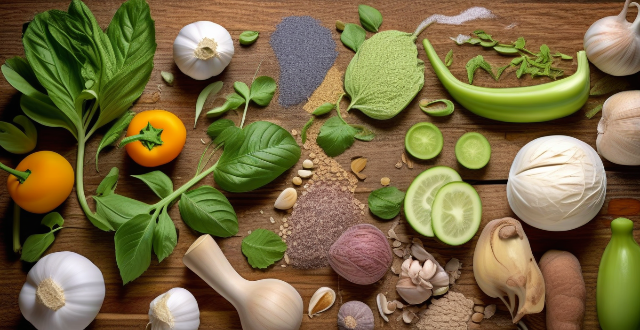
What ingredients are commonly used in Mexican cooking to create its unique flavor profile ?
The article provides an overview of the key ingredients used in Mexican cooking, including chili peppers like ancho, jalapeño, serrano, and habanero; herbs and spices such as cumin, coriander, oregano, and cilantro; and other ingredients like tomatoes, onions, garlic, lime juice, epazote, and hominy. It explains how these ingredients contribute to the distinctive flavor profile of Mexican cuisine and encourages readers to experiment with creating authentic Mexican meals at home.
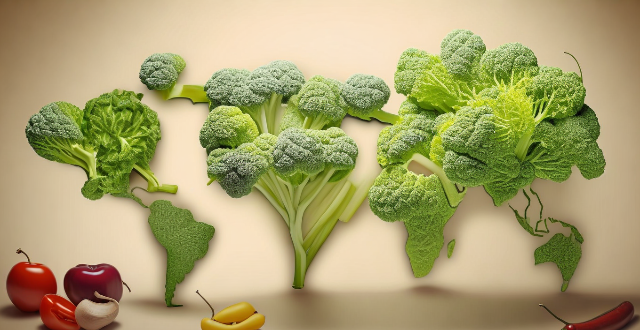
What role does cilantro play in Mexican cuisine in terms of flavor ?
Cilantro is a key herb in Mexican cuisine, adding flavor, aroma, and freshness to dishes. Its unique taste, described as citrusy, grassy, and slightly peppery, complements the bold and spicy flavors of Mexican cooking. Cilantro is used in salsas and guacamole, soups and stews, marinades and rubs, tacos and enchiladas. Its citrusy notes cut through rich ingredients, grassy undertones provide a refreshing contrast, and its peppery bite adds complexity. Cilantro is essential for enhancing the taste and aroma of Mexican dishes.

How do I get that restaurant-quality flavor in my homemade crab cakes ?
How to Achieve Restaurant-Quality Flavor in Homemade Crab Cakes: - Freshness and quality of ingredients are crucial. - Lump crabmeat is preferred for its sweet flavor and good texture. - Use a combination of seasonings like Old Bay, mustard, Worcestershire sauce, and hot sauce. - Bind the mixture with mayonnaise or mustard lightly. - Pan-fry or oven-bake the crab cakes for different textures. - Serve with remoulade sauce and sides like green salad or roasted vegetables. - Allow the crab cakes to rest before cooking and avoid overcrowding the pan.

How do French pastry chefs achieve such delicate textures in their desserts ?
French pastry chefs are renowned for their ability to create desserts with exquisite textures that melt in your mouth. Achieving such delicate results involves a combination of precise techniques, high-quality ingredients, and meticulous attention to detail. Here's a breakdown of the key factors: 1. Mastery of Basic Techniques 2. Use of High-Quality Ingredients 3. Precision Cooking Methods 4. Creative Combinations 5. Attention to Detail
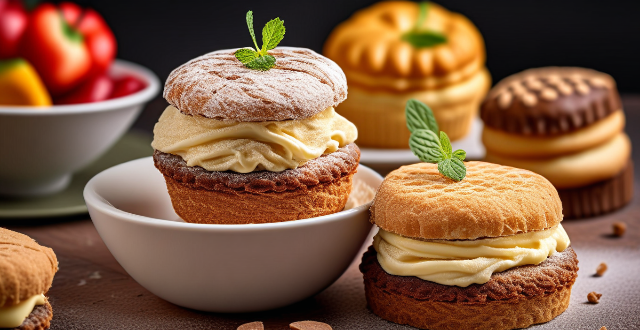
How do French desserts differ from American or British desserts ?
French desserts are known for their high-quality ingredients, precise techniques, and elegant presentation. Popular options include crème brûlée, macarons, and tarte tatin. In contrast, American and British desserts often use simpler ingredients and techniques, with a focus on convenience and taste over appearance. Popular choices include pies, brownies, and cheesecakes.

What is the history behind the French dessert, éclair ?
The éclair is a classic French dessert with a rich history dating back to the early 19th century. Originally known as "petites patisseries" or "small pastries," these early versions were made with a choux pastry shell filled with a sweet cream or custard filling. Over time, the recipe evolved and became more sophisticated, leading to the modern-day éclair with its iconic chocolate icing on top. As the popularity of the éclair grew, bakers began experimenting with different flavors and fillings, resulting in countless variations such as chocolate, coffee, pistachio, and strawberry éclairs. Today, the éclair remains a beloved dessert worldwide, enjoyed by people of all ages and cultures. Its enduring appeal and adaptability make it a true culinary masterpiece.

How can I make my favorite dishes vegetarian without sacrificing flavor ?
How to Make Your Favorite Dishes Vegetarian Without Sacrificing Flavor

How can I make my breakfast more colorful and visually appealing ?
How to Make Your Breakfast More Colorful and Visually Appealing: 1. Use fresh fruits and vegetables for color and nutrition. 2. Experiment with different grains and breads for texture and color. 3. Add spices and herbs for flavor and color. 4. Get creative with plating for visual appeal. 5. Incorporate edible flowers for beauty and flavor.
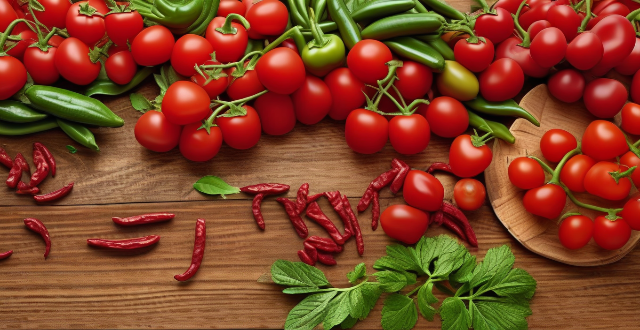
What are some traditional Mexican flavors ?
Mexican cuisine is known for its bold and vibrant flavors, which are a result of the country's rich history and diverse cultural influences. Some of the most traditional Mexican flavors include chili peppers, herbs and spices, fruits and vegetables, dairy products, and meats and seafood. These flavors come together to create the vibrant and delicious cuisine that Mexico is known for.

How does a traditional tarte Tatin differ from other fruit tarts ?
Tarte Tatin is a classic French dessert that differs from other fruit tarts in several ways. It is prepared by cooking the fruits first, which releases their natural juices and creates a rich, syrupy filling. The tart is then baked upside down, resulting in a beautiful presentation with caramelized fruits on top and a flaky crust on the bottom. The flavor profile of Tarte Tatin is also unique, with deep, complex flavors created by the caramelization process and a buttery crust that absorbs some of the fruit flavors. Finally, the texture of Tarte Tatin is delicate and moist, with a flaky crust and juicy fruits that create a satisfying contrast. Overall, Tarte Tatin stands out as a delicious and visually stunning dessert that is sure to delight anyone who tries it.

How can I make sure my paella has the right consistency and flavor ?
To ensure your paella has the right consistency and flavor, choose short-grain rice like Bomba or Calasparra, use fresh proteins and quality vegetables, cook with proper techniques including sofrito caramelization and correct liquid ratios, season well with salt and additional spices, let it rest before serving, and garnish with lemon wedges and parsley.
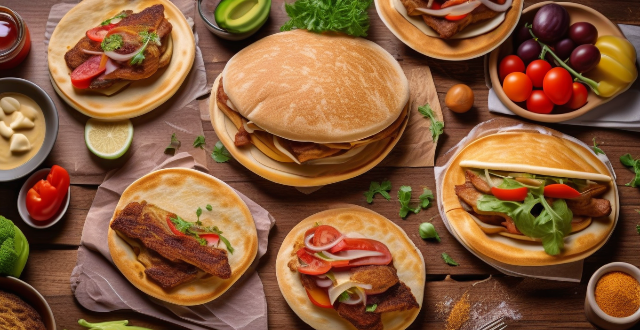
What makes the flavor of street tacos in Mexico different from those found elsewhere ?
The flavor of street tacos in Mexico differs from others due to authentic ingredients, traditional cooking methods, regional specialties, vibrant street food culture, and a variety of condiments.
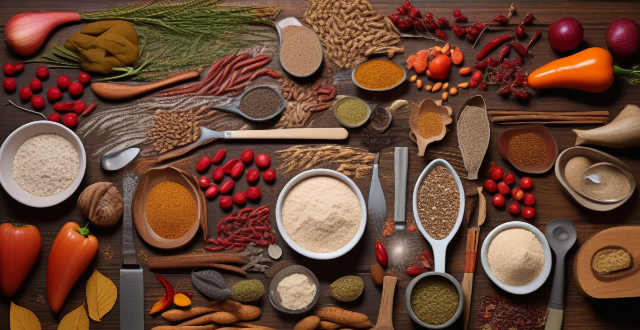
What is the significance of spices in Indian cooking ?
The significance of spices in Indian cooking is multifaceted, encompassing flavor enhancement, cultural traditions, and medicinal benefits. Key spices like turmeric, cumin, coriander, mustard seeds, fenugreek, red chili powder, garam masala, curry leaves, asafoetida, and tamarind contribute to the complex flavor profiles characteristic of Indian cuisine. These spices are used through techniques such as tempering, grinding, and roasting to create a balance of tastes and visual appeal. Historically, spices were valuable commodities in trade and are integral to traditional medicine and religious practices. Regional variations in spice use reflect India's diverse geography and cultural heritage. Understanding the nuances of spice usage allows for a deeper appreciation of the artistry behind Indian dishes.

How can I spice up my usual home-cooked meals with new flavors ?
To spice up your usual home-cooked meals, try using fresh herbs and spices, exploring global flavors, incorporating acids and sweetness, and adding textures and garnishes.

What are some tips for balancing sweet and sour flavors in cocktails ?
"Balancing Sweet and Sour Flavors in Cocktails: Tips and Tricks for Crafting Perfect Drinks"

How can I use bitters to enhance my cocktail recipes ?
Bitters are a crucial ingredient in many cocktails, adding depth and complexity to the flavors. Here's how you can use them to enhance your cocktail recipes: Understanding Bitters: Bitters are concentrated alcoholic extracts made from herbs, spices, fruits, and other botanicals. They are typically used in small amounts to add a subtle, aromatic flavor to cocktails. There are several types of bitters available, each with its own unique flavor profile. Using Bitters in Cocktails: Here are some tips for using bitters in your cocktail recipes: start small, experiment with flavor combinations, use as a garnish, and create your own bitters. Overall, using bitters is an easy way to elevate your cocktail game and create unique, complex flavors that will impress your guests.

What's the best way to infuse alcohol with fruits or spices ?
Infusing alcohol with fruits or spices is a great way to add flavor and complexity to your drinks. Here are the steps to do it right: Materials Needed: - Alcohol of your choice (vodka, rum, gin, etc.) - Fresh or dried fruits/spices - Clean glass jar or bottle with a tight-fitting lid - Fine mesh strainer or cheesecloth - Funnel (optional) Steps to Infuse Alcohol: 1. Choose Your Ingredients: Pick high-quality fruits and spices that complement the flavor profile of your chosen alcohol. Popular combinations include vodka with citrus fruits or jalapeño, rum with tropical fruits or cinnamon, and gin with juniper berries or lavender. 2. Prepare Your Ingredients: Wash and chop fresh fruits into small pieces. For spices, use whole spices like cinnamon sticks or crush them slightly to release more flavor. Dried fruits can be used as they are. 3. Infusion Process: Fill your clean glass jar or bottle with the prepared fruits/spices, leaving about 1/4 of the container empty at the top. Pour in the alcohol until the fruits/spices are fully submerged. 4. Seal and Shake: Close the jar tightly and shake well. Store it in a cool, dark place, shaking it occasionally over the next few days to help release the flavors. 5. Taste Testing: After about 3-5 days, taste your infusion. If it's not strong enough, reseal and let it sit for a few more days. The longer it sits, the more intense the flavor will become. 6. Straining and Bottling: When you're satisfied with the flavor, strain the mixture through a fine mesh strainer or cheesecloth into a clean jar or bottle. Use a funnel to transfer it without spilling. 7. Enjoy! Your homemade infused alcohol is now ready to be enjoyed in various cocktails or served neat over ice. Remember, the quality of your ingredients matters greatly. Always use fresh fruits and high-quality alcohol for the best results. Cheers!

How do I properly season my stir-fry dishes ?
When it comes to stir-fry dishes, seasoning is key to achieving that perfect balance of flavors. Here are some tips on how to properly season your stir-fry dishes: 1. Choose the right ingredients: Select fresh vegetables and proteins that will complement each other in terms of flavor and texture. 2. Use a variety of sauces and spices: Experiment with different sauces and spices to find the perfect combination for your dish. 3. Balance sweet, sour, salty, and spicy flavors: A good stir-fry should have a balance of these four flavors. 4. Cook in batches and use high heat: Cook your ingredients in batches over high heat to ensure even cooking and maximum flavor. 5. Taste and adjust as needed: Taste your stir-fry as you go and adjust the seasoning as needed.

What are the key ingredients in Indian cooking ?
Indian cuisine is known for its rich flavors and diverse dishes. The key ingredients that make Indian cooking unique are spices, herbs, ghee, lentils, rice, yogurt, nuts and seeds, and bread. These ingredients add flavor, color, and aroma to the dishes and create authentic and delicious Indian cuisine.